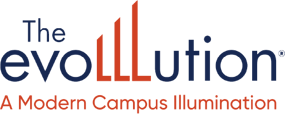Published on
Driving Institutional Success with Streamlined Curriculum Management

Higher education is undergoing a transformation as institutions seek smarter ways to align academic strategy with evolving learner needs. Central to this shift is a renewed focus on intentional curriculum governance that ensures agility, consistency and long-term relevance. In this interview, Shelly Furuness discusses the impact of segmented personalized messaging across channels and the role of analytics and automation in scaling student communication effectively.
The EvoLLLution (Evo): How can reimagining curriculum governance as a strategic enabler—rather than just a necessity on the administrative side—unlock institutional agility and innovation?
Shelly Furuness (SF): It’s crucial to view curriculum governance not just as an administrative task but as a strategic process grounded in shared governance. When we remove unnecessarily burdensome or overly complex procedures from our curriculum review process, so the process itself isn’t an obstacle, we shift from reacting out of desperation to acting with aspiration and advancing institutional goals through collaboration. Governance then becomes a vehicle for strategic planning, bringing faculty and administrators together to align on a shared vision for the institution and its learners.
Evo: How can institutions ensure curricula align with market demands while maintaining academic rigor and that governance standard?
SF: The market doesn’t dictate mission, but the mission can’t succeed without a market of interested, invested people. Institutions must stay tuned to evolving needs in the world to ensure graduates are prepared to meet them. That requires strategic awareness and creativity—sending out scouts to identify areas of growth that align with existing strengths. Rather than chasing trends, schools should focus on opportunities where they’re in a position to lead, balancing what they do well with thoughtful expansion.
Highly regulated fields can offer clearer pathways. Their regulatory standards create opportunity for structured responses, but these standards are rarely the only qualities employers prioritize. They’re looking for people who can think critically, adapt quickly and continue learning—traits that go beyond checklists and regulatory requirements.
That’s where institutions must be intentional, embedding those lifelong learning skills across programs. The market can be fickle, so our challenge is to remain responsive while rooted in purpose. It’s not about bending to demand; it’s about preparing graduates who are equipped to navigate complex, changing landscapes with confidence. Mission and market aren’t opposites but partners, and our job is to ensure our students are ready for both.
Evo: What are the downstream impacts of inconsistent academic data across catalogs, degree planners and departmental pages, and how can consistency improve the overall student experience on the front end?
SF: The biggest downstream impacts of inefficient systems are frustration, burnout and disengagement. People tire of working hard on tasks that shouldn’t be so difficult or that don’t lead to discernable results. At our institution, we talk about operational excellence and efficiency, not just for speed but for minimizing wasted effort. Like fuel efficiency, we want to go as far as possible stewarding the resources we have. Inefficiencies drain that energy, leading to redundancy, unnecessary meetings and overwork.
And when we streamline processes, we often unintentionally increase capacity for more volume, which can lead to even more work. That’s why it’s crucial to ask: What are we working toward? Why are we collecting this data? What story do we want it to tell?
We shouldn’t gather data for its own sake. We need to be intentional, collecting what supports or challenges our goals, and we must include the right voices in the room to ensure we’re not overlooking critical needs or market segments. We need strategic data plans that clarify what our data is meant to do and whom it serves. Often, we collect information just in case someone might need it—grant providers, partners, etc.—but that reactive approach can muddy the narrative. It’s not that we lack data. We lack clarity about what we want it to reveal. Ultimately, effective data use begins with asking the right questions and ensuring the data we collect supports purposeful, actionable insight, not just accumulation.
Evo: How does curriculum governance affect the speed and flexibility of launching new programs or adapting and updating existing ones to meet the evolving enrollment and workforce trend?
SF: Every system is designed to produce the exact outcomes it gets, so if you’re unhappy with those outcomes it’s time to re-examine the system. That includes our systems that look at enrollment data, workforce trends and curriculum governance. If you’re not getting what you need and want from your systems, maybe you’re not asking the right questions, involving the right people or clear enough in your vision for a good outcome. In higher ed, we’re trained to lead with inquiry. If we start with the end goal in mind and articulate a clear vision of it, we can leverage our processes to reach that end effectively and efficiently.
As a curriculum theorist, I see curricula as a system—and every system manages tension. When there’s a lack of transparency or inclusion, tension becomes emotional, not creative, but productive tension fuels progress. Without it, there’s no urgency. Too much, and we become inflexible. The goal isn’t harmony and total agreement on every aspect but maintaining creative tension that moves us forward. That requires systems of shared governance and continuous improvement. Often, people don’t understand the full process or their place in it. Making that process visible reduces us-versus-them thinking and builds shared purpose. If people can’t explain the process, we need more clarity and inclusion.
Evo: Is there anything you’d like to add?
SF: As a professor of education, I often reflect on how curriculum design is a distinct discipline—one that few instructors in institutional settings are trained in. While we hire exceptional subject matter experts, they’re not always equipped to translate content expertise into cohesive curricula. That’s why faculty development must include support in curriculum design, organization and assessment. By helping faculty understand how a curriculum works and what happens when it’s structured differently, we foster transparency and inclusion, empowering them as instructional leaders within the institution.



